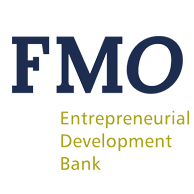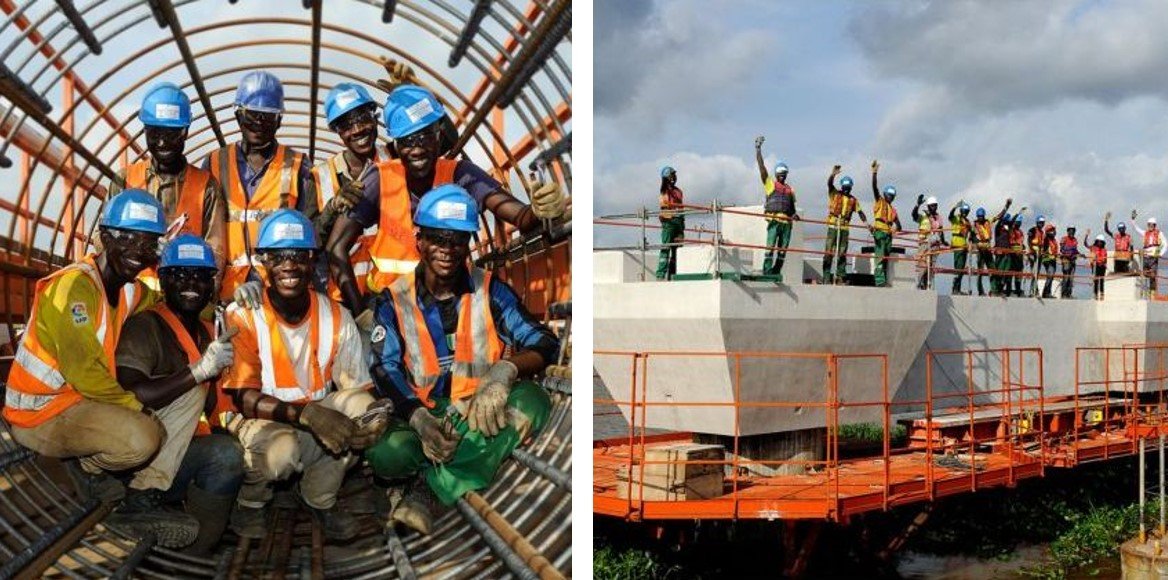


After a new bridge solved severe traffic congestion in Abidjan, FMO’s impact evaluation highlighted its encouraging results for the future of Public Private Partnerships in impact projects.
With four million inhabitants, Abidjan is the largest city in Côte d’Ivoire and the economic capital of the country. The city straddles the Ebrié lagoon, necessitating bridges to connect its various areas. Until 2012 there were two bridges, but a rapid increase in the city’s population led to severe traffic congestion, exceeding the bridges’ safety capacity by 22%.
A rapid increase in the city’s population led to severe traffic congestion
To alleviate the congestion problems, Société Concessionnaire du Pont Riviera Marcory (SOCOPRIM), an Ivorian registered business, was contracted in 2012 to build and operate a third bridge - the Henri Konan Bédié (HKB) Bridge. Due to Abidjan’s lack of long-term funding for infrastructure projects, FMO’s Building Prospects Fund together with FMO invested in this PPP project to support the design, construction, operation and maintenance of the 6.7km bridge. The African Development Bank (AfDB) led the financing round where other lenders such as the West African Development Bank (BOAD), the ECOWAS Bank for Investment and Development (BIDC) and the Africa Finance Corporation (AFC) amongst others participated.
In 2013, FMO commissioned NORC at the University of Chicago to undertake an impact evaluation of the project. The study aimed to understand the economic benefits to road users, the changes in vehicles emissions resulting from changes in traffic flows, the impact on stakeholders (shareholders, lenders, employees, and project-affected people (PAP)), and the future potential of Public Private Partnerships (PPP).
NORC used quasi-experimental methods to estimate the effects of the HKB bridge on traffic patterns, while surveys and interviews were conducted to study the effects on stakeholders and PPP over three phases of the project from 2014 to 2018. During the first two phases, data was collected through traffic counts and surveys, and in the final phase, NORC conducted interviews with key stakeholders, especially the project-affected people.

Building Prospects played a key role in catalyzing funds from FMO and other lenders
One of the study’s findings showed that the limited availability of long-term funding for infrastructure projects and mismatches between the required and available amounts made FMO’s investment financially additional by providing funding not easily available in the market. Building Prospects, a Dutch government fund managed by FMO, co-financed the investment, and played a key role in catalyzing FMO’s funds and other lenders due to its mandate to invest in higher risk projects.
The new bridge was intended to give users more direct routes across the city, reduce travel time, and give them economic and environmental benefits while mitigating any negative environmental and social impact.
Overall, the study reported positive findings: users expressed satisfaction with the new bridge, and congestion and CO2 emission levels both fell. The impact on traffic showed an increase in the number of trips, increased traffic speed and savings in travel time of 62,380 hours every working day. CO2 emissions fell by 10% from 217,000 tons per year to 198,000 tons, and lead emissions also fell by 10%, from 25.4 tons to 22.9 tons per year, contributing to FMO’s core SDG 13 target: Climate Action.
The project also contributed to SDG 8 by creating jobs for approximately 195 people who currently work in the administration, maintenance, and collection of the tolls and of which approximately 45% are women. During the period of the study, salaries increased by 15% and were comparable to those paid by the UN in Abidjan.
Although the majority were satisfactorily resettled, 153 households were not due to insufficient budgeting.
The project also involved displacing residents and small businesses, and the Resettlement Action Plan (RAP) was prepared following World Bank and IFC guidelines. Although the majority of people were satisfactorily resettled, 153 households (1000 people approximately) were not due to insufficient budgeting. In 2015 the government agreed to pay compensation of USD 4,400 per household, which was eventually paid out in 2017 and 2018.
To protect the public from a sudden increase in toll fees, the government decided to introduce lower toll rates. While this affected the project’s revenues, it led to an increase in traffic volumes on the bridge. In addition, the minimum revenue guarantee (MRG) provided by the government ensured that Socoprim was not unfairly prejudiced.
The study made a number of recommendations regarding future PPP projects. First, FMO should secure the involvement of a multilateral official development assistance agency, such as MIGA or the World Bank as part of its risk mitigation strategy in the region. Second, prior to a loan approval, FMO should conduct an independent review of Resettlement Action Plan, in particular focusing on the correct identification of project-affected people and that the budget is sufficient to implement the plan.
Since the completion of this evaluation, FMO has continued to invest in high-impact projects in Ivory Coast. In addition, FMO continues to assess the payment risks of projects on a case-by-case basis. FMO has incorporated the recommendation to improve the protection of the project-affected people by conducting a Resettlement Action Plan Completion Audit by a qualified independent consultant on every project.